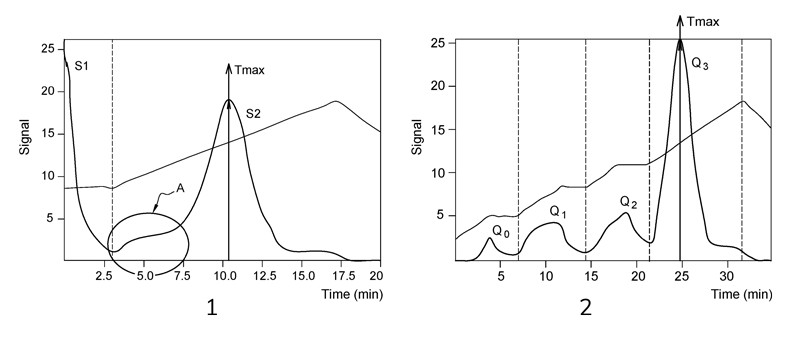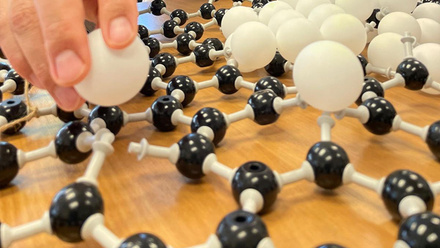Patent – Determining hydrocarbon compounds in geological samples
Dr Tahsin Ali Kassam at Murgitroyd summarises a recently granted patent to determine hydrocarbon compounds in geological samples.

Geochemical techniques for analysing the distribution of free and sorbed (absorbed or adsorbed) hydrocarbon compounds (HCs) in shale oil and gas plays can be used for determining the amount of producible HCs in a rock system.
Rock-Eval Basic/Bulk-Rock is a commonly used method for source rock screening which involves heating a powdered form of a rock sample in an inert atmosphere.
A pyrogram obtained via this method is shown in Figure 1 – the first recorded peak (S1) relates to free and/or sorbed HCs and the second recorded peak (S1) relates to pyrolytic HCs, such as kerogen. The surface areas of the peaks are used to determine the quantities of HCs. The pyrogram provides a thermal maturity parameter (Tmax) which represents the temperature at which maximum release of HCs occurs from cracking of kerogen during pyrolysis.
The quantity of free and/or sorbed HCs can be underestimated in cases where the S1 peak is incomplete. Further, the quantity of pyrolytic HCs can be overestimated when free and/or sorbed HCs are incorporated in the S2 peak, e.g. region (A) in Figure 1.
In June 2021, CGG Services SAS was granted UK patent GB2577946 titled Method for determining at least one quantity of HCs in a geological sample.
The patented method comprises the steps of a) heating a geological sample from a first temperature (T1) to a second temperature (T2) at a first predetermined heating rate and maintaining T2 for a first predetermined duration; b) heating the sample from T2 to a third temperature (T3) at a second predetermined heating rate and maintaining T3 for a second predetermined duration; c) heating the sample from T3 to a fourth temperature (T4) at a third predetermined heating rate and maintaining T4 for a third predetermined duration; and d) heating the sample from T4 to a fifth temperature (T5) at a fourth predetermined heating rate and maintaining T5 for a fourth predetermined duration.
In the claimed method, T1 ranges from 80-100°C, T2 ranges from 175-200°C, T3 ranges from 280-315°C, T4 ranges from 360-405°C, and T5 ranges from 600-650°C. The predetermined heating rates range between 10-30°C/min, and the predetermined durations range between 1-6 minutes. At least one quantity of HCs is determined from a step, a-d.
Figure 2 shows a pyrogram of a 57.4mg geological sample from the Wolfcamp Formation, Midland Basin, Texas, USA, analysed using the method according to the invention. The pyrolysis of the sample starts during step a, which advantageously allows for a relatively precise determination of HC quantities, and the untruncated peaks Q0, Q1, Q2 and Q3, each correspond to the steps a-d, respectively. In this example, the quantities of HCs were determined to be 0.75mgHC/g rock at Q0, 2.60mgHC/g rock at Q1, 2.69 mgHC/g rock at Q2, and 10.2mgHC/g rock at Q3.
Based on the analysis, Q0 may correspond to remaining light molecular weight HCs having e.g. less than 25 carbons and which may be mainly free; Q1 may correspond to medium to heavy molecular weight HCs having e.g. 10-35 carbons and which may be free or absorbed; Q2 may correspond to the heaviest molecular weight HCs having e.g. more than 35 carbons and which may be mainly absorbed; and Q3 may correspond to pyrolytic HCs having e.g. 10-40 carbons. Further, Q3 may comprise pyrolytic HCs only with no free and/or sorbed HCs, providing a more accurate calculation of Tmax during step d.
The analysis was used to calculate 3.35 mgHC/g sample of producible hydrocarbon, 2.69mgHC/g sample of non-producible hydrocarbon, a 0.37 production index, and a Tmax of 446°C.
Read the full patent at bit.ly/3nS7x4Q







